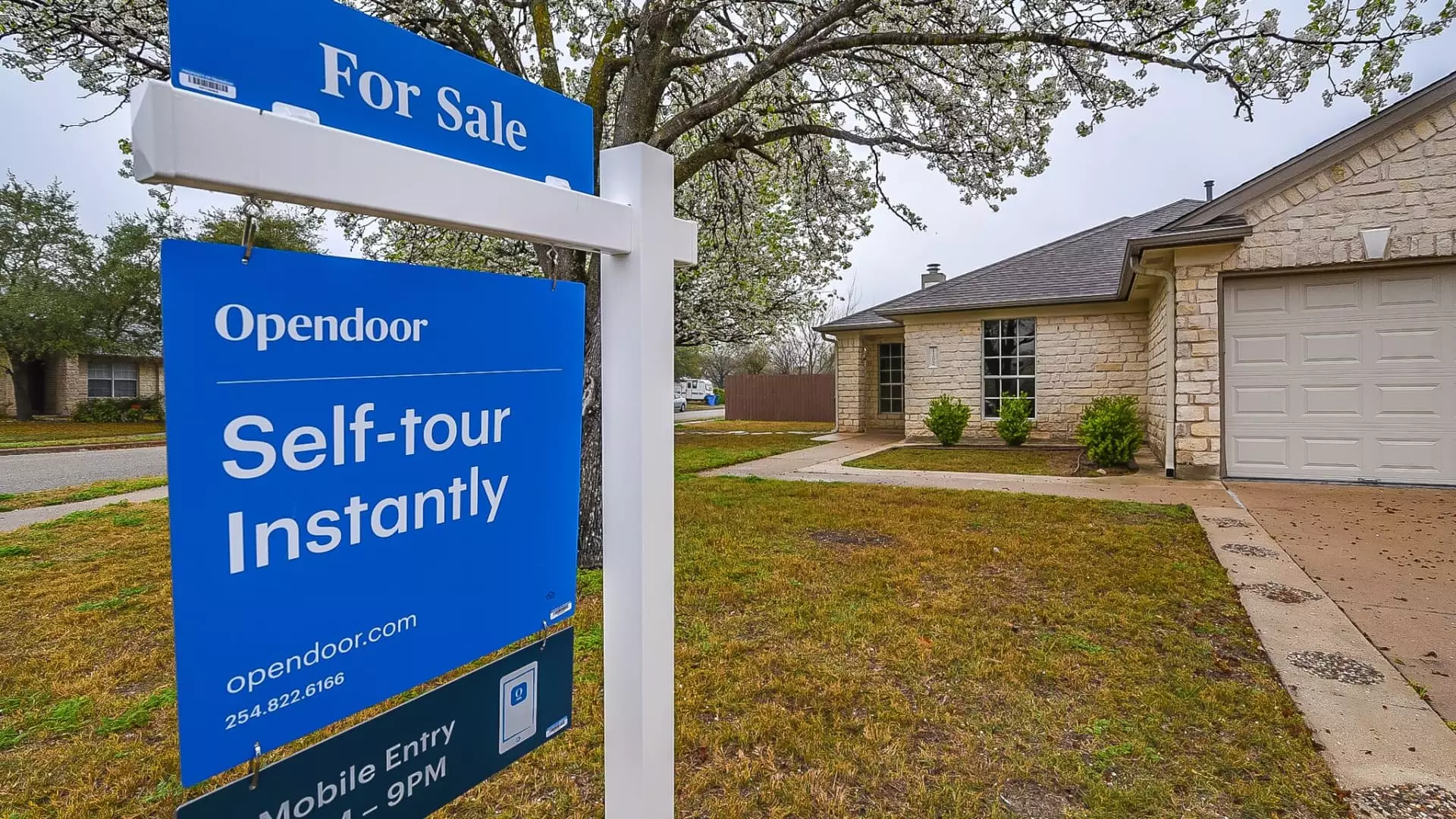Opendoor’s recent surge in stock price and trading volume appears, on the surface, as a sign of renewed investor confidence. Yet beneath this sensational rally lies a fragile and uncertain foundation. Just a few months ago, the company’s shares plummeted to a dismal 51 cents, nearly forcing a reverse split to stave off delisting from Nasdaq—a stark reminder of how quickly fortunes can turn in the volatile real estate tech landscape. The recent fivefold increase in July is more symptomatic of speculative fervor than a genuine resurgence rooted in sustainable business fundamentals. The fact that such a significant leap was driven partly by hedge fund manager Eric Jackson’s endorsement underscores how much of this rally is built on high-stakes betting rather than tangible operational improvement.
Fundamentals in Free Fall
While Opendoor claims to be adjusting its strategic course, the core issues persistent in its business model remain unaddressed. The company’s pivot away from aggressive iBuying towards a less capital-intensive referral model may be a necessary evolution, but it cannot mask the structural challenges it faces in a deteriorating housing market. The sharp decline in revenue—from nearly $15.6 billion in 2022 to just over $5 billion last year—tells a story of a fundamentally shrinking operation strained by rising mortgage rates and declining home demand. A meager 4% revenue growth in the second quarter, coupled with a narrowed loss, looks more like window dressing than a sign of genuine turnaround. The projected third-quarter revenue outlook of under $900 million—down significantly from previous levels—further exemplifies how the company is still grappling with a contracting market and a fundamentally flawed business cycle.
The False Promise of Short-Term Gains
Investors seem captivated by short-term narratives driven by hope and hyped expectations rather than conviction in the company’s long-term viability. The fervor around Eric Jackson’s bullish stance—predicting a share price potentially reaching $82—ignores the hard reality that the company’s business fundamentals haven’t caught up. The surge in trading volume and share price may be reflective of speculative mania rather than well-founded confidence, especially considering the underlying economic pressures. Mortgage rates remain high, curbing buyer enthusiasm and leading to record new listings. This ongoing decline in demand leaves Opendoor exposed to a bleak outlook, where its attempts to diversify into referral-based services risk becoming a bandaid rather than a cure.
The Struggle for Strategic Clarity
Opendoor’s leadership now emphasizes a strategic shift towards referrals—an attempt to adapt without overextending itself in an adverse environment. While this pivot is undoubtedly necessary, it raises questions about whether the company has a clear and compelling long-term vision or is merely reacting to market shocks. Highlighting this change as the “most important strategic shift” suggests an awareness of past mistakes, yet it also signals a period of uncertainty and transition. For a company that built its identity on high-volume, fast-turnaround home sales, transitioning to a less capital-heavy model is crucial but fraught with risks. It remains to be seen whether this shift will restore investor confidence or if it will further expose underlying vulnerabilities.
The Reality Behind the Hype
Perhaps the most important insight from this tumultuous period is the importance of skepticism. The recent rally resembles a classic case of momentum chasing—driven more by legend, speculation, and the hope of a future “glory days” than by current fundamentals. While some investors may view Opendoor as undervalued or misunderstood, the evidence suggests a business still in turmoil, trying to find its footing amid an inhospitable environment. The company’s ability to stabilize its revenue base, manage costs prudently, and chart a realistic path forward will ultimately determine whether this rally is merely a fleeting illusion or the sign of genuine, long-term recovery. Until then, caution and critical appraisal should dominate the investor mindset, not blind enthusiasm.


Leave a Reply